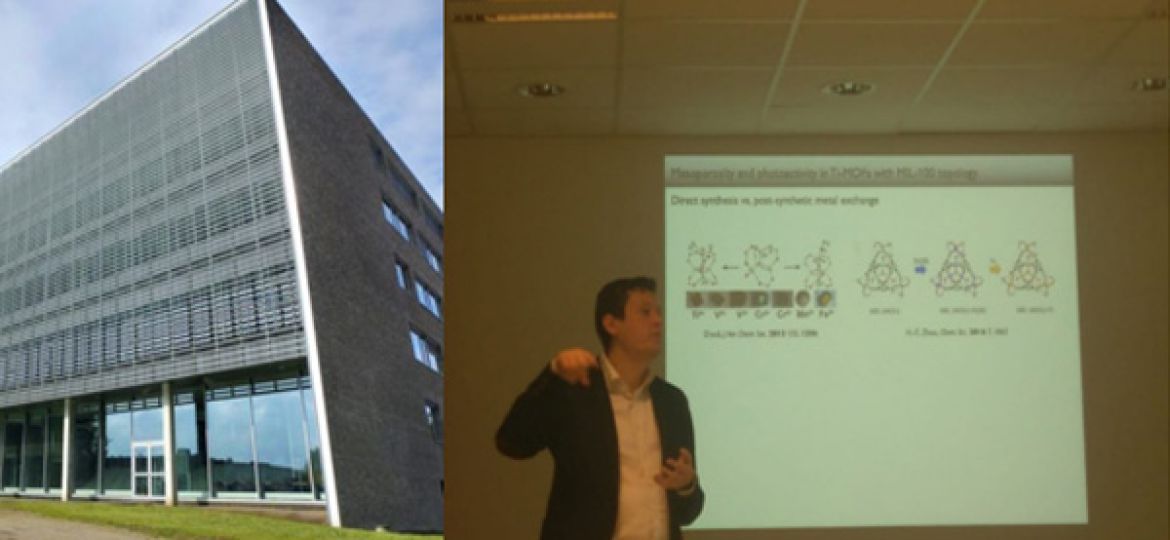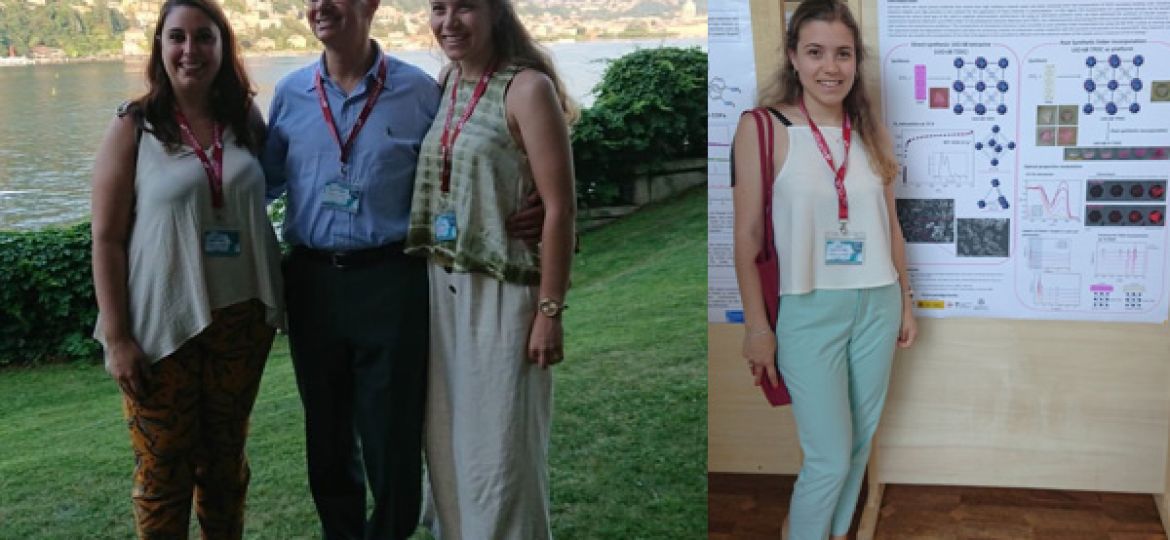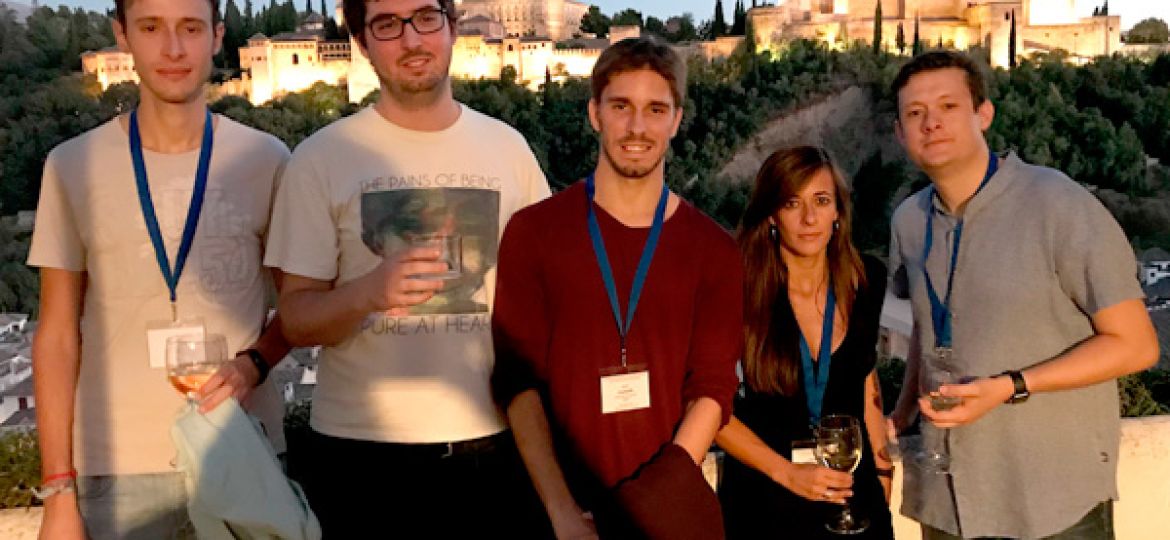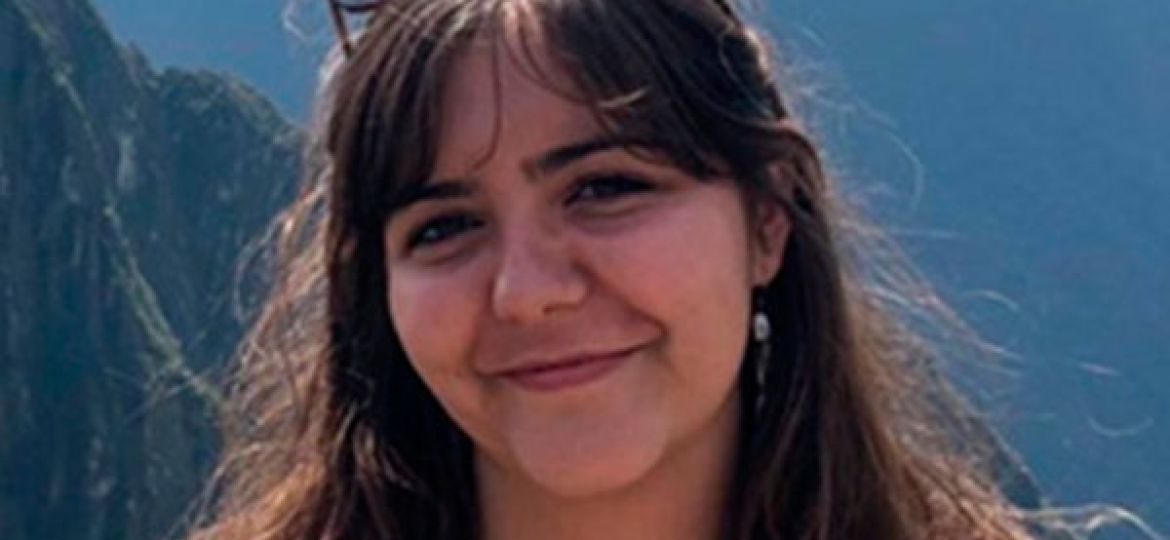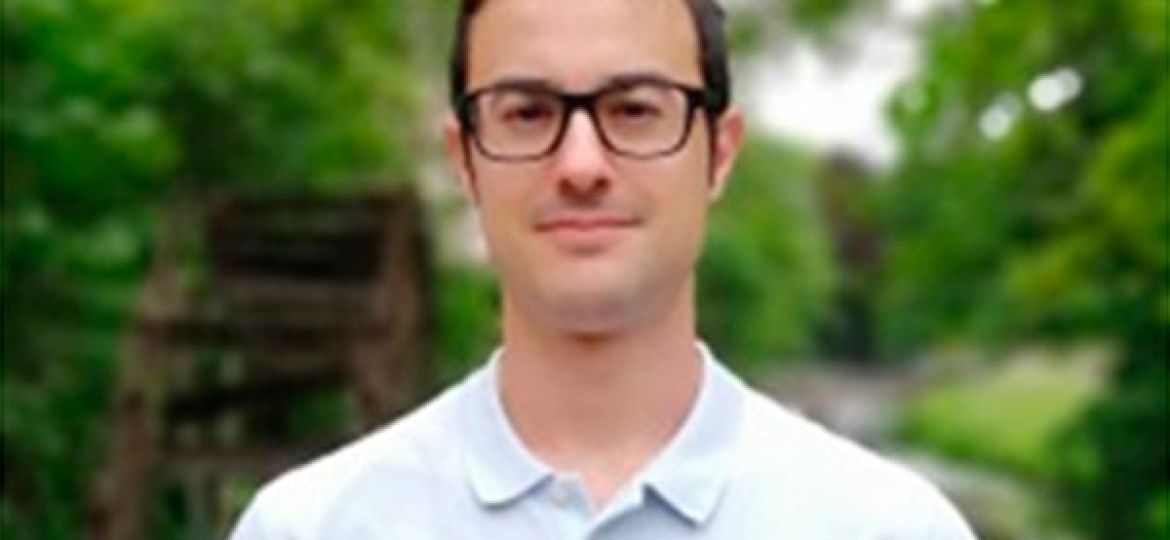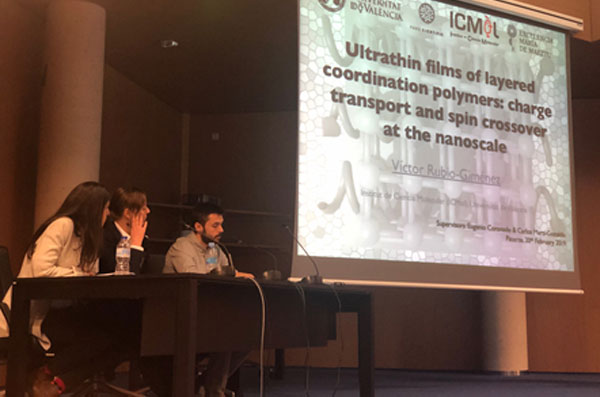Carlos visited KU Leuven (Prof. Dirk De Vos and Francisco García Cirujano) to present the last results of the team on charge transport and photoactivity in MOFs.
MOF School held in Lake Como (Italy) with an amazing line up of invited speakers and presented her recent work on the nanosizing of titanium frameworks and photoactive Zr(IV) MOFs. They also had time to make new friends!
See here for more info.
Funimat was present at the International Symposium on Composites of Metal and Covalent Organic Frameworks held in Granada. Carlos delivered a keynote lecture on Charge Transport in Ultrathin films of Metal-Organic Framewors. For more details see here.
Rubén graduated in Chemistry at the Universidad de Valencia in 2019. He will be exploring the electrocatalytic properties and potential of some of the materials developed @FuniMAT in energy conversion.
Ana graduated in Chemistry in 2018 after an Erasmus stay at The University of Manchester. She will be exploring new methodologies for the flow synthesis of pharmaceuticals with MOF catalysts.
Fran is originally from Elche. He joins the team with a La Caixa Junior Leader Fellowship Fellowship after a Postdoc stay in KU Leuven with Dirk De Vos. He will focus on the development of high performance metal-organic framework catalysts.
Katherine Mirica (Dartmouth College) visited us and presented the recent advances of her team on conductive metal-organic frameworks to develop advanced sensory platforms. We are hopeful this will initiate a fruitful collaboration between both groups.
Victor has officially become Dr. Rubio-Giménez after defending his PhD Thesis. The jury was formed by Prof. Mirica, Medina and Gándara. Victor will continue his work on conductive and magnetic MOFs until September 2019 when he will join Ameloot´s group at Leuven with a FWO Fellowship. Congratulations!
Isabel and Francisco have been awarded the Marie Curie and La Caixa Junior Leader Fellowships, respectively. These are very competitive calls that highlight their excellent scientific and academic performance. Congratulations!
Carlos joined Yaghi´s lab at UC Berkeley as a visiting scholar to discuss on potential collaborations on water adsorption and CO2 reduction with heterometallic titanium organic frameworks. Thanks for the invitation!

